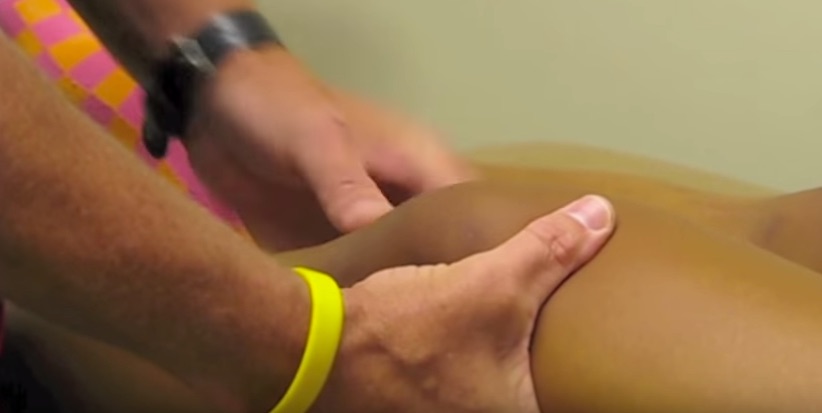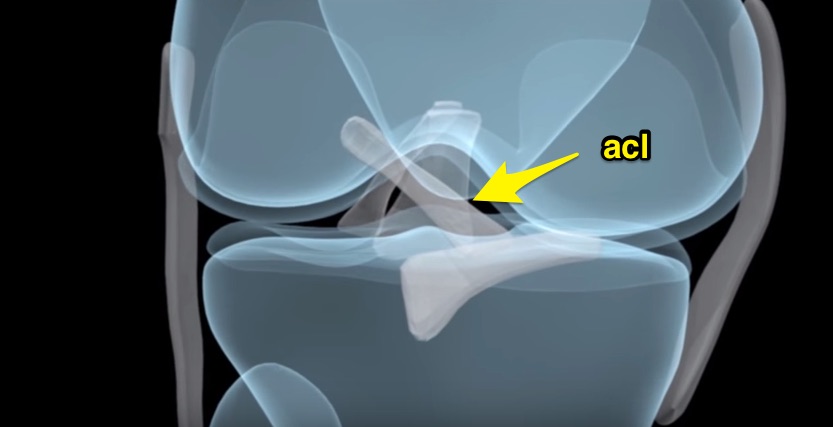Introduction
The anterior cruciate ligament or ACL is one of the major stabilizing ligaments in the knee. It is a strong structure located in the centre of the knee running from the femur (thigh bone) to the tibia (shin bone).
When this ligament tears unfortunately it doesn’t heal and often leads to the feeling of instability in the knee.
ACL reconstruction is a commonly performed surgical procedure and with recent advances in arthroscopic surgery can now be performed with minimal incisions and low complication rates.
What Does Your ACL Do?
The ACL is the major stabilizing ligaments in the knee. It prevents the tibia (Shin bone) moving abnormally on the femur (thigh bone). When this abnormal movement occurs it is referred to as instability and the patient is aware this abnormal movement.
Often other structures such as the meniscus, the articular cartilage (lining the joint) or other ligaments can also be damaged at the same time as a cruciate injury & these may need to be addressed at the time of surgery.
How it is Injured?
• Most injuries are sports related involving a twisting injury to the knee
• Usually occurs with a quick change of direction, such as a cut in soccer or football, a direct blow e.g. a tackle, landing awkwardly.
• Often there is a popping sound when the ligament ruptures.
• Swelling usually occurs within minutes or hours.
• There is often the senstation of your knee popping out.
• You will probably not be able to continue playing sport.
Once the initial injury settles down the main symptom is instability or giving away of the knee. This usually occurs with running activities but can occur on simple walking or other activities of daily living.
How to Diagnose and Torn ACL
Often the diagnosis can be made just form the athletes description of how the injury happened.
The doctor or physiotherapist can detect instability of the knee. This is usually done with a Lachmans Test.

An MRI (Magnetic Resonance Imaging) can be helpful if there is doubt as well as to look for damage to other structures within the knee.
Sometimes the diagnosis can only be made with an Arthroscopy.
Treatment
Initial
• Rest
• Ice
• Elevation
• Bandage
Long term
Not everyone needs surgery.
Some people can compensate for the injured ligament with strengthening exercises or a brace.
If you have an ACL injury, it is strongly advised to give up sports involving twisting activities, such as soccer, tennis, football, basketball.
This is because the knee has lost some major stability, and continuing to play sport can cause further damage to important structures within the knee. Which can then lead to early arthritis, and even a knee replacement.
Indications for surgery
If you fit into any of these categories, it is recommended you have ACL surgery.
– Young patients wishing to maintain an active lifestyle.
– Sports involving twisting activities e.g., Soccer, netball, football
– Knee giving way with activities of daily living.
– If your occupation requires good strength and athleticism. Like Policemen, firemen, roofers, laborers, scaffoulders.
Prior to Surgery:
You should attempt to regain as much motion and strength in the muscles around your knee as possible – such as your quadriceps and hamstrings. A gym program or even a series of physiotherapy prior to surgery is a good idea.
Surgery:
Fortunately, modern surgical techniques have improved significantly over the last decade. These days complications are low and recovery much quicker than in the past.
The surgery is performed arthroscopically. Under aesthetic, two small incisions are made at the front of your in the knee.
The ruptured ligament is removed and then tunnels (holes) in the bone are drilled to accept the new ligament graft. This graft is taken either from your hamstring tendon or the patella tendon, and totally replaces your old ACL. Talk to your knee surgeon about which type of graft is best for you.
Your new tendon (ligament) is then fixed into the bone with various devices to hold it into place while the ligament heals. Over the next six months this ligment will become stronger and fix into the bone.
The rest of your knee will then be inspected while you in the operation room. This allows any other damage to be repaired, such as meniscal tears.
Main Surgeon Locations
Post-operation
Surgery is usually performed as a day procedure. Occasionally you might be in for an or an overnight stay.
Your surgeon will see you after the operation before you leave to discuss the outcomes and next step of your treatment plan.
You will have pain medication and you will be seen by a physiotherapist who will teach you to use crutches and show you some simple exercises to do at home.
Leave any waterproof dressings on your knee until your post-op review.
You can put all your weight on your leg.
Ice your the knee for 20 minutes at a time, as frequently as possible for the next 5 days.
You will see your surgeon again for a post-op review usually around 7-10 days.
Physiotherapy can begin after a few days.
Rehabilitation
Physiotherapy is a crucial part of your treatment and recovery.
You should start active rehab as early as possible. The early aim is to regain range of motion, reduce swelling and achieve full weight bearing.
Professional sportsmen and women often return to sport at around 6 month, however recreational athletes may take 10 -12 months depending on motivation and time put into your rehabilitation.
Your physiotherapist will contact the program for you.
It will involve activities such as exercise bike riding, swimming, proprioceptive exercises and muscle strengthening.
Cycling can begin at 2 months, jogging can generally begin at around 3 months.
The graft is strong enough to allow sport at around 6 months however other factors come into play such as confidence, fitness and adequate fitness and training.
Summary
Anterior Cruciate Ligament reconstruction is a common and very successful knee surgery procedure. In the hands of an experienced knee surgeon who perform a lot of these procedures, 95% of people have a very good outcome and can return to full activity.
It is generally a good idea however in the patient wishing to return to an active lifestyle especially those wishing to play sports involving running and twisting.
If you have any further questions you should consult with your specialist knee orthopaedic surgeon.
How to Find the Best Knee Surgeon.
Click here to find the best knee surgeon in your area in Australia
